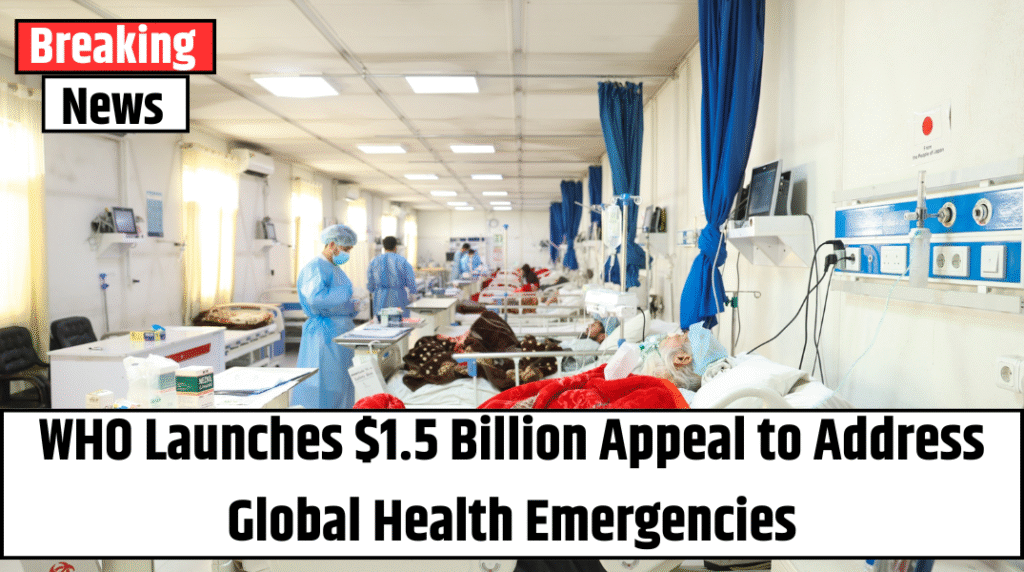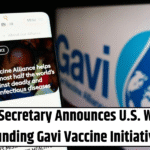In what has been described as a defining moment for global health, the World Health Organization (WHO) has issued a powerful plea for support as it confronts a surge in humanitarian health emergencies around the world. With over 305 million people in desperate need of medical assistance in 2025 alone, the organization has launched its 2025 Health Emergency Appeal (HEA), requesting US$1.5 billion to deliver essential, life-saving care across more than 40 crisis-affected regions.
The appeal, unveiled by WHO Director-General Dr. Tedros Adhanom Ghebreyesus, paints a stark picture of the current health landscape, where crises no longer come one at a time — but all at once.
“The world is no longer facing isolated emergencies. We’re seeing a cascade of conflict, epidemics, and climate-driven disasters converging in the same fragile communities,” said Dr. Tedros. “This appeal isn’t just about emergency response — it’s about restoring dignity, protecting health, and preventing further suffering in places where hope is in short supply.”
Overlapping Crises: A New Global Norm
The WHO’s 2025 HEA targets 42 active health emergencies, including 17 classified as Grade 3 — the most severe category demanding the highest level of intervention. From war-torn zones in Sudan, Gaza, and the Democratic Republic of Congo, to regions grappling with disease outbreaks, forced displacement, and environmental destruction, WHO is urgently scaling up operations to meet growing needs.
Health systems in many of these areas have collapsed or are on the verge of doing so. Essential medical services, maternal care, mental health support, vaccination drives, and malnutrition treatment are either unavailable or dangerously inadequate.
In response, WHO aims to:
-
Deliver urgent medical supplies
-
Provide maternal and child health services
-
Launch disease prevention campaigns
-
Offer mental health care to trauma survivors
-
Support frontline health workers
Also Read – Small but Vital Health Care Agency Faces Elimination Under Trump Plan
The Four Forces Driving the Health Crisis
According to the appeal, today’s emergencies are increasingly shaped by four relentless forces:
-
Armed Conflict – Widespread violence is destroying health infrastructure and blocking access to care.
-
Climate Change – Extreme weather events are accelerating disease outbreaks, food insecurity, and population displacement.
-
Mass Displacement – More people than ever are being forced from their homes, increasing vulnerability to illness and injury.
-
Infectious Disease Outbreaks – From cholera and measles to re-emerging threats like polio, disease is spreading rapidly in unstable regions.
These drivers are not just intersecting—they’re feeding off each other, creating feedback loops that make recovery even harder.
WHO’s Mission: Life-Saving and Life-Building
While WHO’s emergency work often begins with the immediate — clean water, emergency surgeries, vaccinations — its broader mission focuses on resilience. That means helping communities build the tools and systems needed to withstand future crises. This includes training local health workers, building early warning systems, and ensuring that care reaches the most marginalized groups.
“We’re not only treating illness,” said Dr. Tedros. “We’re building a foundation for long-term health equity. Every vaccine, every mental health intervention, every hospital kit sent into a war zone is a step toward restoring humanity in the most chaotic of places.”
Bridging the Funding Gap: A Moral Imperative
Despite the scale of the need, global humanitarian budgets are under severe strain. WHO’s call for $1.5 billion comes amid competing priorities worldwide, but the organization warns that underfunding now could have catastrophic consequences.
“This appeal is not just a financial request. It’s a moral obligation,” the statement reads. “We must stand with people whose lives are being torn apart—not with words, but with action.”
Also Read – Health Care AI Meant to Save Costs Now Relies on High-Priced Human Labor
The Health Emergency Appeal breaks down specific needs for each Grade 3 emergency, allowing donors and partners to see exactly where their support will make a difference. WHO also emphasized that all efforts are aligned with international humanitarian law and driven by the principle that no one should be left behind.
A Time for Global Solidarity
At its core, this appeal is a call for global unity. As humanitarian health crises grow in scale and complexity, the only way forward is through coordinated, international support.
WHO is urging governments, foundations, private donors, and individuals to recognize the interconnected nature of today’s crises — and respond accordingly.
“When one community suffers, we are all diminished,” Dr. Tedros emphasized. “By investing in health today, we are investing in a safer, more stable, and more just world for all of us.”



